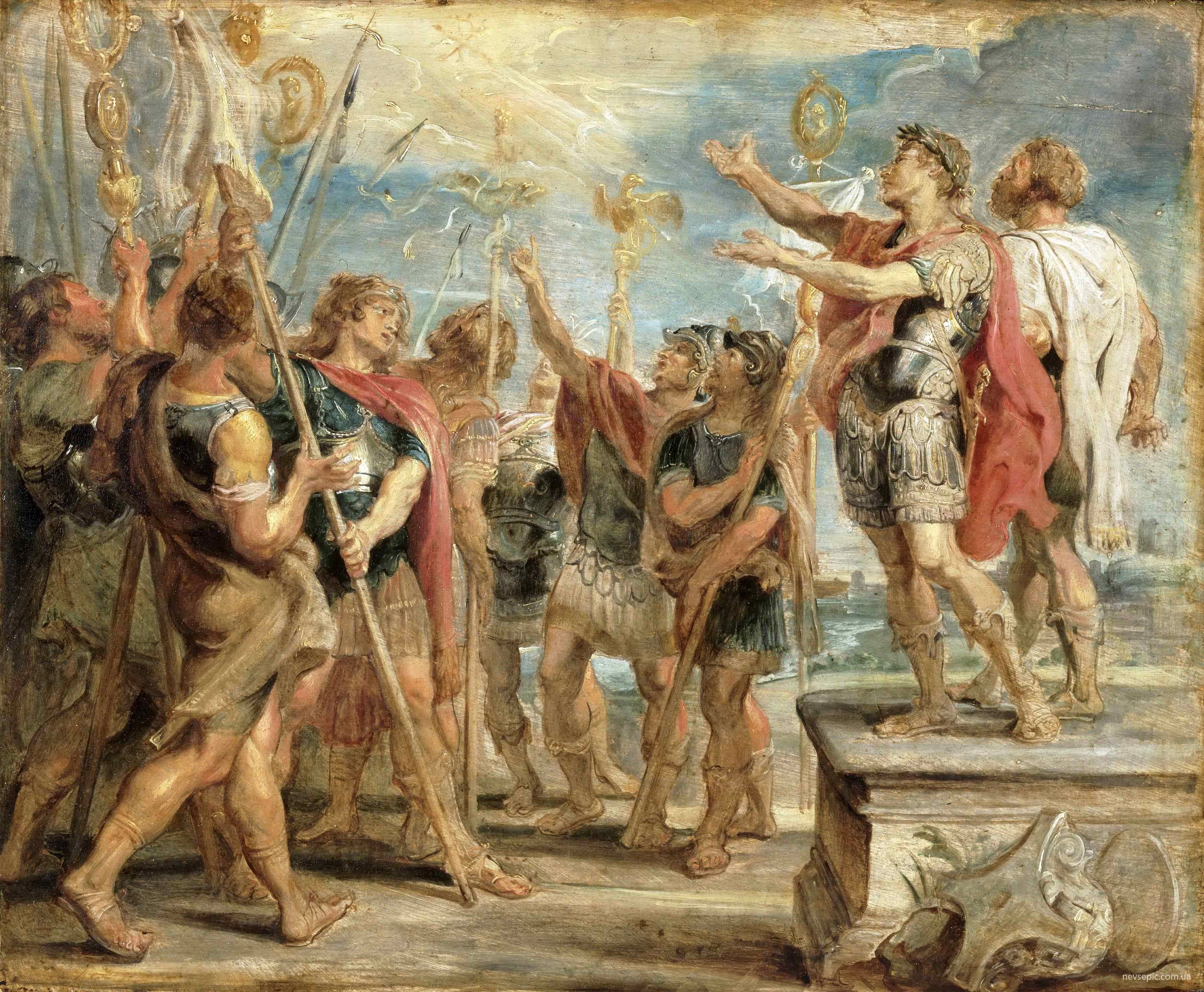To: blam
Of course it had to be a catastrophic event — we’re all into Hollywood special-effect type explanations.
We know Roman civilization (empire, really) just kind of peetered out & ultimately succumbed to barbarian invasions. Why can’t this have happened elsewhere and in other eras? At a lower state of technological development, civilization & pastoral lifestyles (advanced herdsman) lived in a kind of delicate balance. A population explosion among the herdsman followed by a drought, and entire ‘nations’ are set in motion. It’s like a game of billiards (or dominoes falling).
I don’t think these timelines really sync the way they are suggesting they do, so I’ll stick with the more mundane theories.
26 posted on
04/30/2007 5:44:11 PM PDT by
Tallguy
(Climate is what you plan for, weather is what you get.)
To: Tallguy
Sirente Crater
The Conversion of Constantine
He said that about noon, when the day was already beginning to decline, he saw with his own eyes the trophy of a cross of light in the heavens, above the sun, and bearing the inscription, Conquer by this. At this sight he himself was struck with amazement, and his whole army also, which followed him on this expedition, and witnessed the miracle. (source: Eusebius, Life of the Emperor Constantine). An impact of the Sirente size can be seen at big distance as a strip of fire turning into a fireball and then generating a pyrotechnic show. There may be a proximity in space and time between the proposed Sirente impact and the vision that the emperor Constantine had before the famous Battle of Milvian Bridge. A possibile coincidence between these two events has been widely discussed in the popular press.
32 posted on
04/30/2007 5:52:40 PM PDT by
blam
To: Tallguy
There is evidence that a catastrophic event, a massive volcanic eruption or impact event put a dagger in the heart of Rome...
"Around the middle of the sixth century there was a dramatic climate shift; John of Ephesus, another sixth century historian, described it, “the sun became dark and its darkness lasted for 18 months. Each day, it shone for about four hours, and still this light was only a feeble shadow” (Keys 1999). Procopius also described the incident which took place in 535 and 536 C.E., writing “the sun gave forth its light without brightness like the moon during the whole year” (Keys 1999). Tree ring analysis shows an extended period of cold indicated by extremely narrow growth rings between 536 and 545. The narrow growth rings correspond to a decreased growth rate that would be expected with a global temperature decrease of approximately 3 °C (Rigby et al 2004). This mini nuclear winter is believed to have been caused by a comet hitting the earth (Rigby et al 2004) or the eruption of a massive volcano, possibly Krakatoa (Keys 1999). This cold period was accompanied by wetter than usual weather in several parts of Eurasia and was followed by drought (Keys 1999). This disruption of weather could have weakened the population through crop failures and famine, and made the people more susceptible to plague."
58 posted on
05/01/2007 7:59:11 AM PDT by
Kozak
(Anti Shahada: " There is no God named Allah, and Muhammed is his False Prophet")
FreeRepublic.com is powered by software copyright 2000-2008 John Robinson
